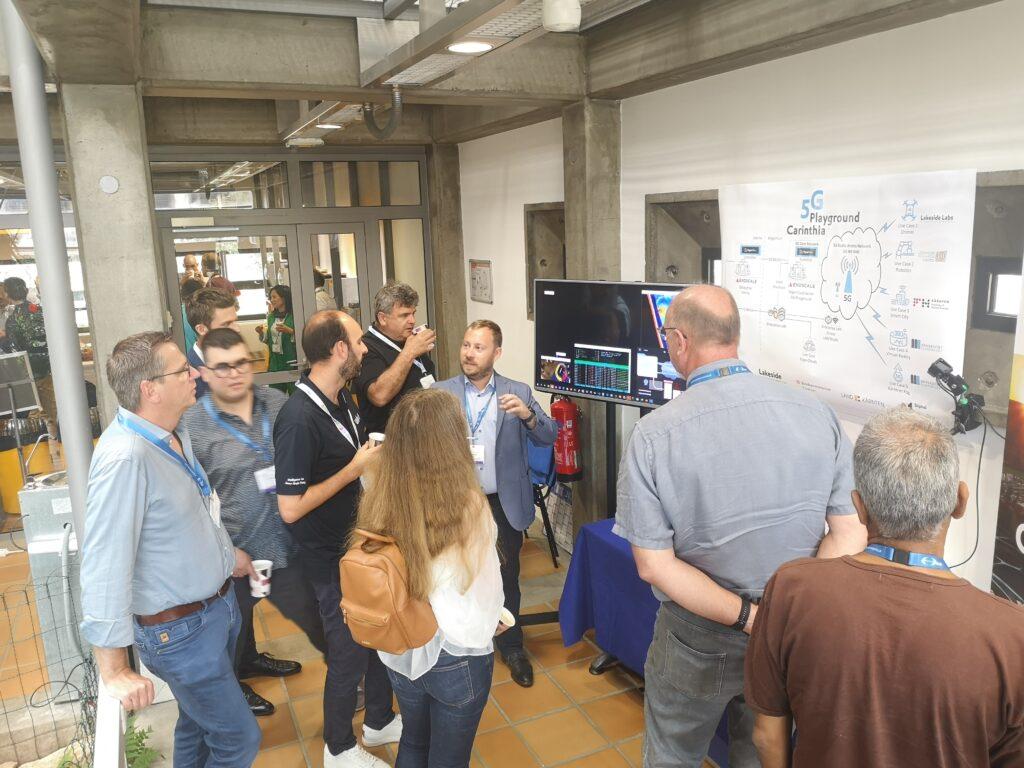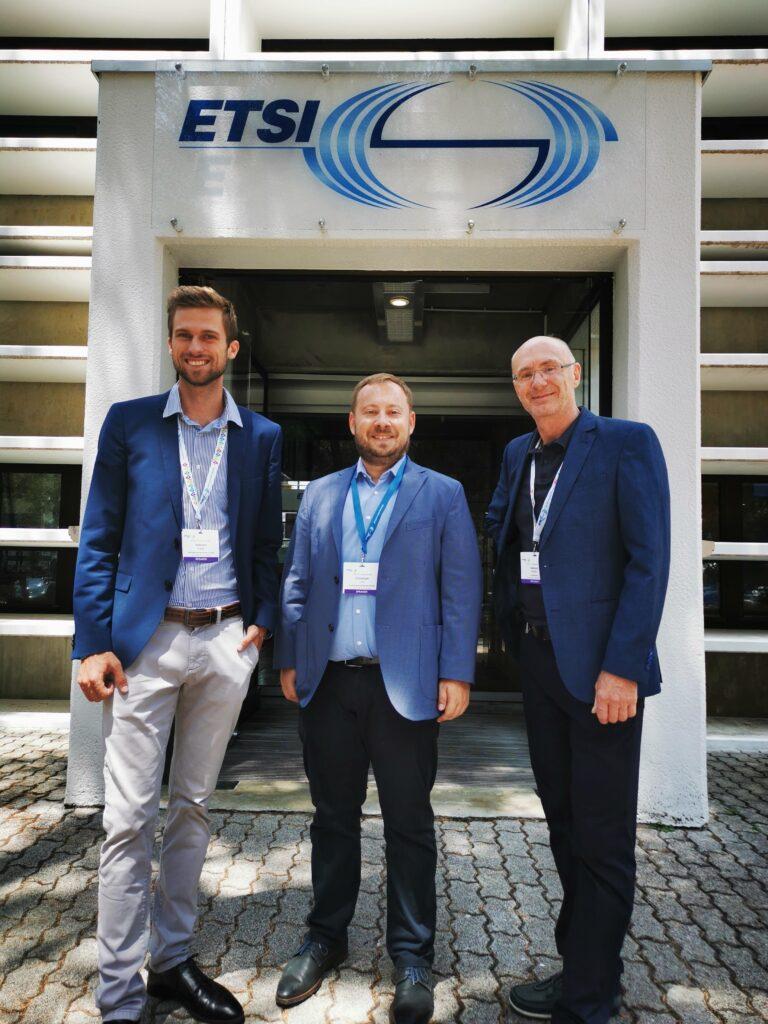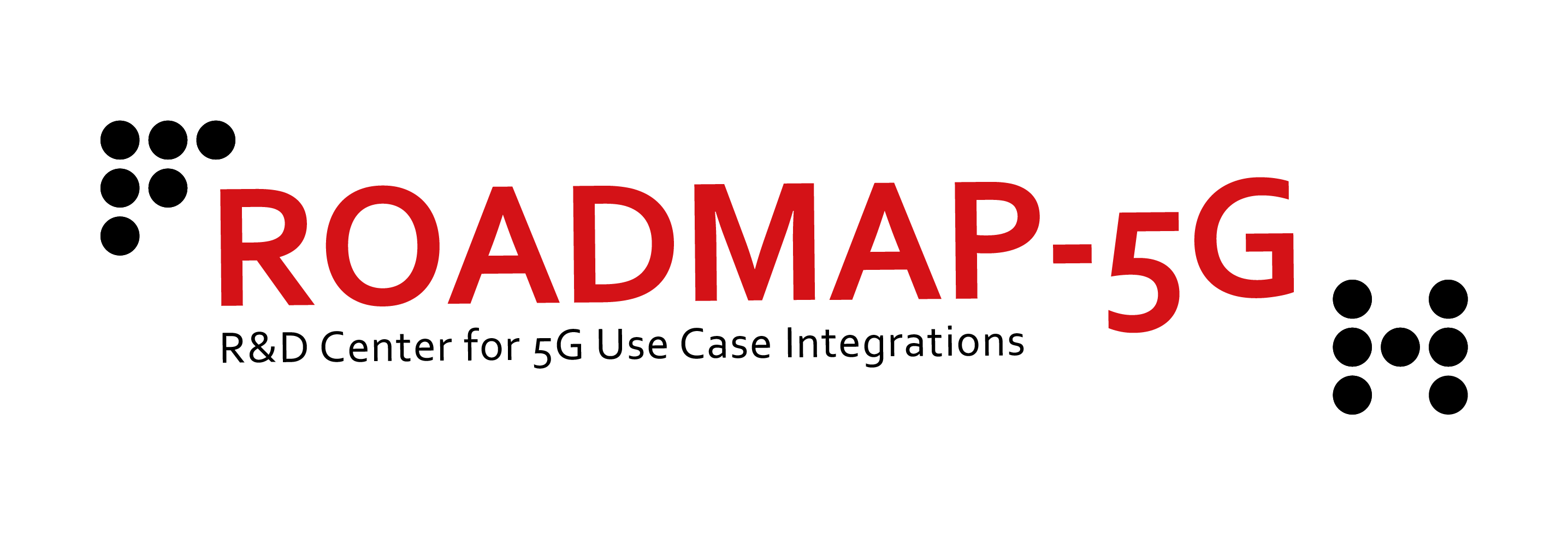A delegation of our research group, consisting of Prof. Helmut Wöllik, along with the researchers Valentin Egger and Christoph Uran had the chance to be a part of this year’s edition of the ETSI IoT Conference at the premises of the European Telecommunications Standards Institute (ETSI) in Sophia Antipolis, France. At this conference, we presented and demonstrated our Adaptive Streaming Framework (ASF) and how it can be used in smart city environments. We had the pleasure of discussing our approach with other experts and researchers, as well as members of various standardization entities.
For our team, Monday, July 4, 2023, marked the beginning of the conference. This is one day before its actual start because, in addition to the presentation, we also showed a demo, which had to be prepared ahead of time. The demo consisted of the following key components:
- A remote-controlled toy car on a track to simulate moving objects inside a smart city.
- A commercial consumer-grade WiFi router and a switch for connecting the components. Usually, we do this inside our campus 5G network. However, due to a lack of it at the ETSI premises, we decided to use conventional network connectivity.
- Three NVIDIA Jetson Nano boards, each with a dedicated camera connected:
- An Intel RealSense LiDAR Camera L515 is used for acquiring a depth image of the smart city scene.
- An Arducam Global Shutter Mono Camera is used for acquiring detailed imagery of selected parts of the smart city scene.
- An AJA U-TAP HDMI grabber and a GoPro action cam connected to the grabber via HDMI are used for acquiring an overview of selected parts of the smart city scene.
- A commercial business laptop for receiving and evaluating the image data from the Jetson Nanos.
- A commercial business laptop for monitoring the network traffic between all the components of the demonstrated system.
An overview of the demo setup can be seen in the following image.

Monday concluded after setting the whole system up and making some final checks before the start of the conference.
Tuesday started with the Opening Session by the Director General of ETSI, Luis Jorge Romero as well as other speakers in the impressive Amphitheatre. This is where also all the other presentations took place.

The second session was allocated to the presentation of all the available demonstrations. Here, our researcher Christoph Uran could outline the demo setup and give the audience some more detailed background information on our Adaptive Streaming Framework. The ASF focuses on two principles that are important for future smart cities.
- Network-efficient streaming of data: Typical smart cities contain a variety of different sensors, ranging from simple temperature sensors to very throughput-intensive cameras. The ASF enables the streaming of such complex data. However, the processing entity (ASF Consumer) can dynamically request data from the generating entity (ASF Producer) via a controlling entity (ASF Registry). This leads to a massive reduction of the transmitted data because only the important parts of the camera image need to be transmitted in the requested quality and interval via the network.
- Sensor virtualization: Using high-dimensional sensors such as imaging cameras and LiDAR cameras enables extensibility which is not possible with conventional single-purpose sensors. For example, a camera can be used for monitoring parking spaces in “normal” situations. In emergencies, it can be used for aiding in the deployment of emergency vehicles.

After this session and during the next days, we had some very interesting talks at our demo booth with representatives from research institutions, standardization bodies, telecommunication providers, telecommunication equipment manufacturers, and many more.

The program on Wednesday included a session named “The Role of MEC (Multi-access Edge Computing) in IoT Digital Transformation”. In this session, Helmut Wöllik, the head of our research group, presented some more background information on the ASF and its possible integration into the ETSI MEC ecosystem. Standards like ETSI MEC enable a closer coupling between applications (e.g. smart city applications) and modern telecommunication networks such as 5G. Thus, it is possible to bring applications (full or in parts) very close to the clients and not exclusively into a remote cloud data center. This will be essential in the future because applications increasingly rely on low latency and users demand higher data protection standards.

The presentation was followed by an interesting panel discussion with an exchange of ideas on how to promote the adoption of various standards in the domain of Cloud and Edge Computing. For the remainder of the conference, we also had a multitude of technical discussions that will prove highly valuable for future collaborations in related fields.
Overall, this was a very successful event where we had the chance to present our innovations and meet important stakeholders and potential future partners. We thank ETSI for the amazing organization and look forward to future events and meetings as well as fruitful collaborations.

This post is also available in: Deutsch (German)

